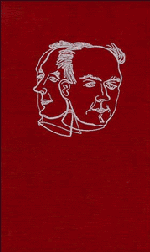Book contents
- Frontmatter
- Contents
- NEW MUSICAL RESOURCES
- PART I TONE COMBINATIONS
- 1 The Influence of Overtones in Music
- 2 Polyharmony
- 3 Tone-quality
- 4 Dissonant Counterpoint
- PART II RHYTHM
- PART III CHORD-FORMATION
- DEFINITIONS OF TERMS
- A NOTE ON THE TYPE IN WHICH THIS BOOK IS SET
- Notes on the text
- Henry Cowell's “New Musical Resources”
- Index
3 - Tone-quality
from PART I - TONE COMBINATIONS
Published online by Cambridge University Press: 05 June 2015
- Frontmatter
- Contents
- NEW MUSICAL RESOURCES
- PART I TONE COMBINATIONS
- 1 The Influence of Overtones in Music
- 2 Polyharmony
- 3 Tone-quality
- 4 Dissonant Counterpoint
- PART II RHYTHM
- PART III CHORD-FORMATION
- DEFINITIONS OF TERMS
- A NOTE ON THE TYPE IN WHICH THIS BOOK IS SET
- Notes on the text
- Henry Cowell's “New Musical Resources”
- Index
Summary
Science has shown that the only possible difference in tone-quality between tones having the same fundamental is through a different relation of dynamics in the overtone series; thus in the tone of a flute even numbered partials are prominent and odd numbered partials are faint, while on the clarinet the reverse is the case. The consequence is that the difference in tone-quality between these instruments is so great that tones which are really the same on them may sound as though they were an octave apart. The result of playing a flute and a clarinet at the same time is an almost perfect series of overtones, and therefore a rich quality of tone.
Science also shows that if the lower partials are more in evidence in a tone, the result will be a comparatively clear or “pure” tone; if the middle partials, such as those from the third to the ninth or eleventh are more prominent, a thicker or “rich” tone is produced. If very high overtones predominate in a tone, the quality sounds dissonant or discordant in proportion, sometimes even suggesting to the ear that the tone is out of tune.
We find that public taste in the matter of tone-quality has gone in the same direction as in harmony; for formerly, at a time when chords formed from low overtones were considered to be the only concords, the taste was to admire pure tone-quality, which is now seen to be related to such concords by being formed from the same overtones. In the period immediately preceding ours the public taste was for seventh and ninth chords, and a rich tone-quality; the rich quality is formed by a predominance of the same overtones as produce the seventh and ninth chords. Among the contemporary composers who use higher reaches of the overtone series for their harmonic basis, there is a tendency to use more and more dissonant tone-qualities in orchestration.
- Type
- Chapter
- Information
- New Musical Resources , pp. 32 - 35Publisher: Cambridge University PressPrint publication year: 1996



